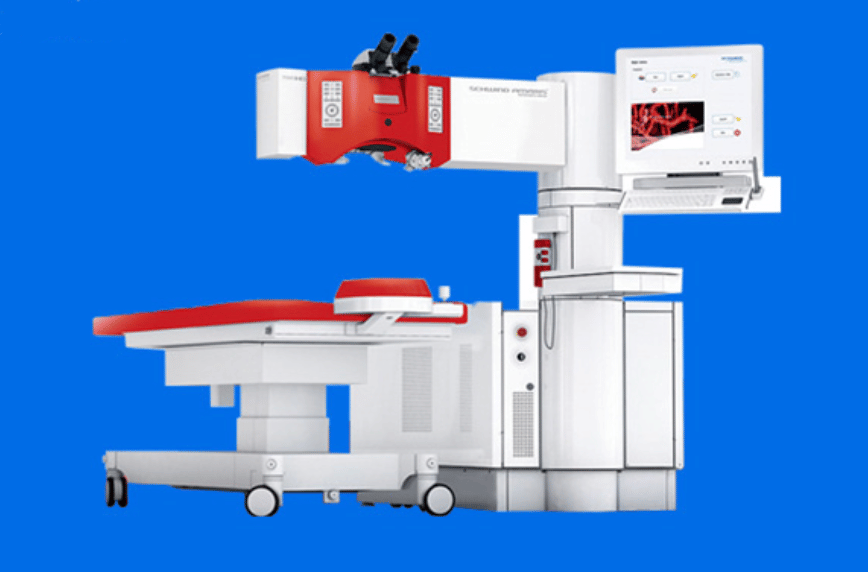LASEK in Gangnam, Seoul | Gangnam Bright Smile Eye Clinic
What Is LASEK (Surface Vision Correction)?
LASEK is a flap-free laser procedure that reshapes the cornea’s surface to correct nearsightedness, farsightedness, and astigmatism. It’s often chosen for patients with thin corneas, dry eye tendencies, or active lifestyles where flap safety matters. (Also known as PRK—a closely related technique. We’ll recommend the best option after diagnostics.)
Who Is a Good Candidate?
You may be suitable if you:
- Prefer a flap-free procedure (sports, military, high-impact activities)
- Have thin corneas or borderline corneal thickness for LASIK
- Have stable vision (typically stable Rx for 1–2 years)
- Have
healthy eyes with no active disease or significant scarring
A comprehensive exam—topography, pachymetry, tear assessment—confirms eligibility.
Why Choose LASEK at Gangnam Bright Smile Eye Clinic
- Precision Diagnostics: High-resolution mapping and tear film analysis to plan safe, predictable corrections.
- Surgeon-Led Care: From candidacy to aftercare, you’ll see the same medical team at each step.
- Comfort Protocols: Modern bandage lenses, cooling strategies, and drop regimens to ease early recovery.
- English-Friendly: Clear explanations and written aftercare in English for international patients.
- Prime Location: Easy access in Gangnam, Seoul with flexible scheduling.
How LASEK Works (Step-by-Step)
- Mapping & Plan – Corneal scans and personalized treatment profile.
- Epithelial Loosening – The thin surface layer (epithelium) is softened and gently moved aside.
- Excimer Laser Reshaping – The laser precisely reshapes the cornea to your prescription.
- Bandage Lens Placement – A soft lens protects the surface while it re-epithelializes.
- Structured Aftercare – Lubricants, anti-inflammatories, and scheduled checkups.
Recovery Timeline & Aftercare
- Days 1–4: Scratchy sensation/light sensitivity common; vision fluctuates. Use prescribed pain control and drops; wear sunglasses outdoors.
- Day 4–7: Bandage lens typically removed; functional vision returns for most desk work.
- Weeks 2–4: Continued visual sharpening; avoid eye rubbing, swimming, saunas.
- 1–3 Months: Vision stabilizes to final clarity; attend all follow-ups.
Benefits You’ll Notice
- No corneal flap (ideal for contact sports/military)
- Broad candidacy for thinner corneas
- Stable long-term outcomes with modern platforms
Possible Risks (We Minimize Them)
- Temporary discomfort, light sensitivity, haze (managed with medications)
- Dryness during healing (improves with lubricants)
- Rare over/under-correction (enhancement considered after stabilization)
LASEK vs. LASIK vs. SMILE—Which Is Right for Me?
- LASEK/PRK: Best when flap-free is preferred or cornea is thin; recovery a bit longer.
- LASIK: Fastest comfort and visual recovery; requires a corneal flap.
- SMILE: Flap-free with tiny incision; fast recovery; suited for many myopic/astigmatic cases.
We recommend based on your corneal profile, lifestyle, and dryness risk.
Pricing & Packages
Fees vary by prescription, corneal parameters, and technology options. After your diagnostic exam, we provide a transparent quote that typically includes pre-op testing, surgery, postop visits, and medications.
How to Prepare
- Stop soft contacts 3–7 days prior (rigid lenses 2–3 weeks, if applicable).
- Bring your latest prescription and medical history.
- Arrange a ride home on surgery day; wear sunglasses.
FAQs
Does LASEK hurt?
You’re numbed during treatment. Some
2–4 days of discomfort afterward is normal and manageable.
How soon can I work?
Many desk-based patients resume light work
after 4–7 days; final vision sharpens over weeks.
Can I exercise?
Light cardio after
1 week; avoid swimming and intense/sweaty workouts for
2–3 weeks.
Book Your LASEK Consultation in Gangnam
Start with a complete
eye mapping and tear assessment to confirm candidacy and compare
LASEK, LASIK, and SMILE.
Gangnam Bright Smile Eye Clinic – Seoul, Korea
LASEK (Laser-Assisted Subepithelial Keratectomy) Eye Surgery

What is LASEK eye surgery?
Amaris laser vision surgery - LASEK is the most popular elective procedure performed in the world and safe and effective. LASEK procedures remove a thin cell layer from the top of the eye so the laser can reshape the underlying cornea. This surgery may be an option for those who are not eligible for LASIK or those who look for the most economic option for refractive laser surgery.
4 Reasons why your eyes will love smile.
- Complications associated with creating and reattaching the flap in the cornea are avoided.
- LASEK eye surgery causes dry eye less frequently than LASIK Surgery.
- High level of preciseness.
- Preventing fuzzy night vision.
Disadvantages of LASEK
❌
Longer Recovery – The healing process takes
3-7 days, compared to
1-2 days for LASIK.
❌
More Discomfort – Some patients experience temporary
pain, light sensitivity, and irritation during healing.
❌
Slower Vision Improvement – Clear vision may take
a few weeks to stabilize.
Who is a Good Candidate for LASEK?
🔹 People with
thin corneas who are not eligible for LASIK
🔹 Those with
active lifestyles (e.g., athletes, military personnel)
🔹 Patients concerned about
dry eye syndrome
🔹 Individuals with
mild to moderate myopia, hyperopia, or astigmatism
Comparison: LASEK vs. LASIK vs. PRK
| Feature | LASEK | LASIK | PRK |
|---|---|---|---|
| Flap Creation | ❌ No | ✅ Yes | ❌ No |
| Recovery Time | 3-7 days | 1-2 days | 5-7 days |
| Discomfort Level | Moderate | Mild | High |
| Dry Eye Risk | Lower | Higher | Lower |
| Best for Thin Corneas | ✅ Yes | ❌ No | ✅ Yes |
| Suitable for Athletes | ✅ Yes | ❌ No (Flap risks) | ✅ Yes |
Conclusion
LASEK is an excellent option for patients who are not eligible for LASIK due to thin corneas or dry eye concerns. While the recovery is longer, it provides a safe and effective vision correction solution.
Would you like more details or help comparing it to other procedures? 😊

